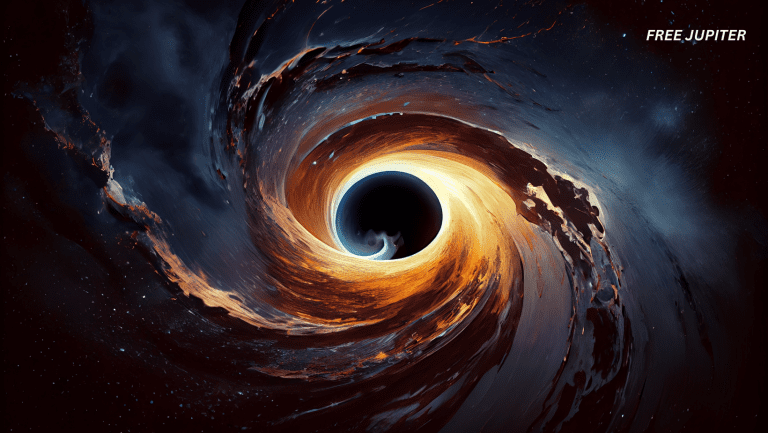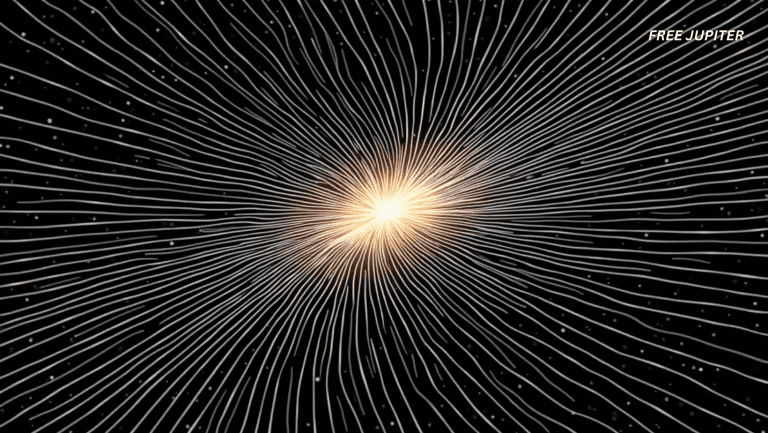A remarkable breakthrough has been achieved by astronomers, who have uncovered compelling evidence pointing to the existence of a planet that appears to orbit not one, but two stars—a configuration reminiscent of the fictional desert world Tatooine, immortalized in the Star Wars saga. This discovery, attributed to researchers at the University of Birmingham in the United Kingdom, is expanding the frontiers of our understanding regarding the diversity and complexity of planetary systems beyond our own solar neighborhood.
The Distant Realm: A Planet Far Beyond Earth
The planet in question is believed to reside approximately 120 light-years from Earth, a distance so vast that it defies ordinary comprehension. To place this in perspective, a single light-year equates to nearly six trillion miles, underscoring the staggering remoteness of this celestial body from our planet. Despite its immense distance, the planet’s presence has been inferred through the gravitational effects it exerts upon its neighboring stars. These subtle influences, rather than direct observation, have provided the primary evidence for its existence, as the planet itself has not yet been visually detected.
An Unusual Celestial Dance: Orbiting Brown Dwarfs
What sets this discovery apart is the nature of the stars around which the planet is believed to orbit. Unlike most known exoplanets, which circle main-sequence stars similar to our Sun, this planet appears to be bound to a pair of brown dwarfs—substellar objects that occupy a unique niche in the cosmic hierarchy. Brown dwarfs are more massive than gas giants such as Jupiter, yet they lack sufficient mass to ignite the nuclear fusion that characterizes true stars. These enigmatic objects have been observed for several years, with astronomers noting that, from Earth’s vantage point, they periodically eclipse one another, resulting in a regular cycle of partial obscuration.
Detecting the Invisible: Gravitational Clues
The latest research has revealed anomalies in the motions of these brown dwarfs. Their orbits, when scrutinized with precision, were found to deviate from expectations. These irregularities suggested that an unseen third object a planet was exerting a gravitational pull on the binary system. Of particular note is the planet’s unusual orbital inclination. Rather than adhering to the typical flat orbital plane, the planet appears to trace a steep, perhaps even perpendicular, path around the two stars. Such a configuration is exceedingly rare in the field of astrophysics and hints at a tumultuous formation history.
Read more: Physicists Think They’ve Finally Seen The Elusive Evidence of String Theory
Tools of Discovery: The Very Large Telescope
The evidence underpinning this discovery was amassed using the European Southern Observatory’s Very Large Telescope (VLT), a state-of-the-art instrument renowned for its ability to probe the depths of the cosmos. While the planet itself has not yet been imaged directly, the gravitational anomalies detected in the brown dwarfs’ movements strongly indicate the presence of a planetary companion influencing their orbits.
Scientific Prudence: Cautious Optimism
Despite the excitement generated by this potential discovery, the scientific community has approached the findings with measured caution. Simon Albrecht, an astrophysicist at Aarhus University who was not involved in the research, has remarked that absolute certainty regarding the planet’s existence has not yet been attained, emphasizing the need for further evidence and analysis before definitive conclusions can be drawn. Such skepticism is a hallmark of the scientific process, ensuring that extraordinary claims are subjected to rigorous scrutiny.
Circumbinary Planets: Not Entirely Unprecedented
Planets that orbit two stars, known as circumbinary planets, are not entirely unknown to science. Over the past decade, several dozen such worlds have been identified, thanks in large part to missions such as NASA’s Kepler and TESS. However, the newly detected planet distinguishes itself by virtue of its steep, likely perpendicular orbit, a feature that is virtually unprecedented among known circumbinary planets. This unusual orbital geometry may be indicative of dramatic gravitational disturbances or collisions that occurred during the early stages of the system’s formation.
Table: Notable Circumbinary Planets
| Planet Name | Distance from Earth | Host Stars | Orbit Characteristics | Discovery Method |
|---|---|---|---|---|
| Kepler-16b | 200 light-years | Two smaller stars | Eccentric, coplanar | Transit (Kepler) |
| OGLE-2007-BLG-349(AB) | 8,000 light-years | Two red dwarfs | 7-year orbit, close binary | Gravitational lensing |
| TIC 172900988b | 818 light-years | Two stars | 200.5-day orbit, gas giant | Transit (TESS) |
| 2M1510 (AB) b | 120 light-years | Two brown dwarfs | Steep, possibly perpendicular | Gravitational influence |
The Enigma of Brown Dwarfs
Brown dwarfs themselves are objects of considerable scientific intrigue. Sometimes referred to as “failed stars,” they occupy a liminal space between the largest planets and the smallest stars. Although they do not shine as brightly as main-sequence stars, brown dwarfs emit enough energy to be detectable with sensitive instruments. The study of planets orbiting brown dwarfs offers a unique window into planetary systems that differ markedly from our own, potentially reshaping our understanding of the types of worlds that may exist throughout the galaxy.
Broader Implications for Planetary Science
The implications of this discovery extend far beyond the identification of a single planet. Planets with unusual orbits in multi-star systems provide valuable insights into the laws of orbital mechanics, the processes of planetary formation, and the evolution of complex systems. The climates, seasons, and day-night cycles on such worlds are likely to be profoundly different from those experienced on Earth, raising intriguing questions about the potential for life and the diversity of planetary environments in the universe.
Read more: Welcome To Starbathing: The Next Big Thing In Travel
Science and Imagination: The Interplay of Fact and Fiction
The discovery of a planet orbiting two stars has long been a staple of science fiction, most famously depicted in the Star Wars universe. Study author Thomas Baycroft has reflected on the way in which such discoveries blur the boundaries between imagination and reality, noting that planets circling twin stars were once the exclusive domain of speculative fiction. The fact that such worlds have now been identified in reality underscores the symbiotic relationship between creative speculation and scientific exploration.
“Planets circling twin stars existed in sci-fi for decades before we knew that they could even really exist in reality,” Baycroft observed.
The Path Forward: Awaiting Confirmation
At present, many of the suspected planet’s characteristics—including its mass, composition, and atmospheric properties—remain unknown. Additional observations will be necessary to confirm its existence and to gather more detailed data. Advances in telescope technology, particularly the deployment of next-generation space-based observatories, may eventually enable astronomers to directly image such planets or to analyze their atmospheres for signs of habitability.
The Significance of Circumbinary Planets
The discovery of planets orbiting two stars has been made possible by a variety of observational techniques. For example, NASA’s Kepler mission confirmed the existence of Kepler-16b, the first unambiguous detection of a circumbinary planet, using the transit method, where the dimming of starlight reveals the presence of a planet. More recently, the Hubble Space Telescope employed gravitational microlensing to confirm the existence of OGLE-2007-BLG-349(AB), a planet orbiting a pair of red dwarfs. The TESS mission has also contributed to this field, demonstrating that even with limited observational data, the detection of circumbinary planets is achievable.
The Broader Context: A Universe Full of Surprises
The ongoing search for exoplanets has revealed a universe far more diverse and surprising than previously imagined. The detection of planets with eccentric orbits, extreme inclinations, and unusual host stars challenges conventional models of planetary system formation and evolution. Each new discovery serves as a reminder that the cosmos is replete with phenomena that defy expectations and expand the horizons of human knowledge.
Read more: Earth’s Water Might Not Have Originated From Asteroids After All: Scientists
Bridging Science and Storytelling
From a cultural perspective, the idea that a real-life Tatooine-like planet might exist reinforces the notion that science fiction often anticipates scientific discovery. Although the resemblance to George Lucas’ imagined world is largely superficial, the spirit of exploration and curiosity it inspires is deeply rooted in the human experience. This new discovery serves as a testament to the creativity of nature and the ingenuity of those who seek to understand it.
Conclusion: The Endless Frontier
While the existence of this mysterious world awaits definitive confirmation, its discovery has already pushed the boundaries of what is known and imagined. The investigation into such planets not only advances the field of astronomy but also inspires a sense of wonder about the universe and our place within it. As humanity continues to gaze deeper into the cosmos, it becomes ever more apparent that the universe is a realm of infinite possibilities, filled with surprises that may be hiding in plain sight.
The search for planets orbiting twin suns—a concept once relegated to the realm of fiction—has now become a vibrant and expanding field of scientific inquiry. Whether or not this particular planet is ultimately confirmed, the journey of discovery will undoubtedly continue, revealing new worlds and new mysteries in the vast expanse of space.










